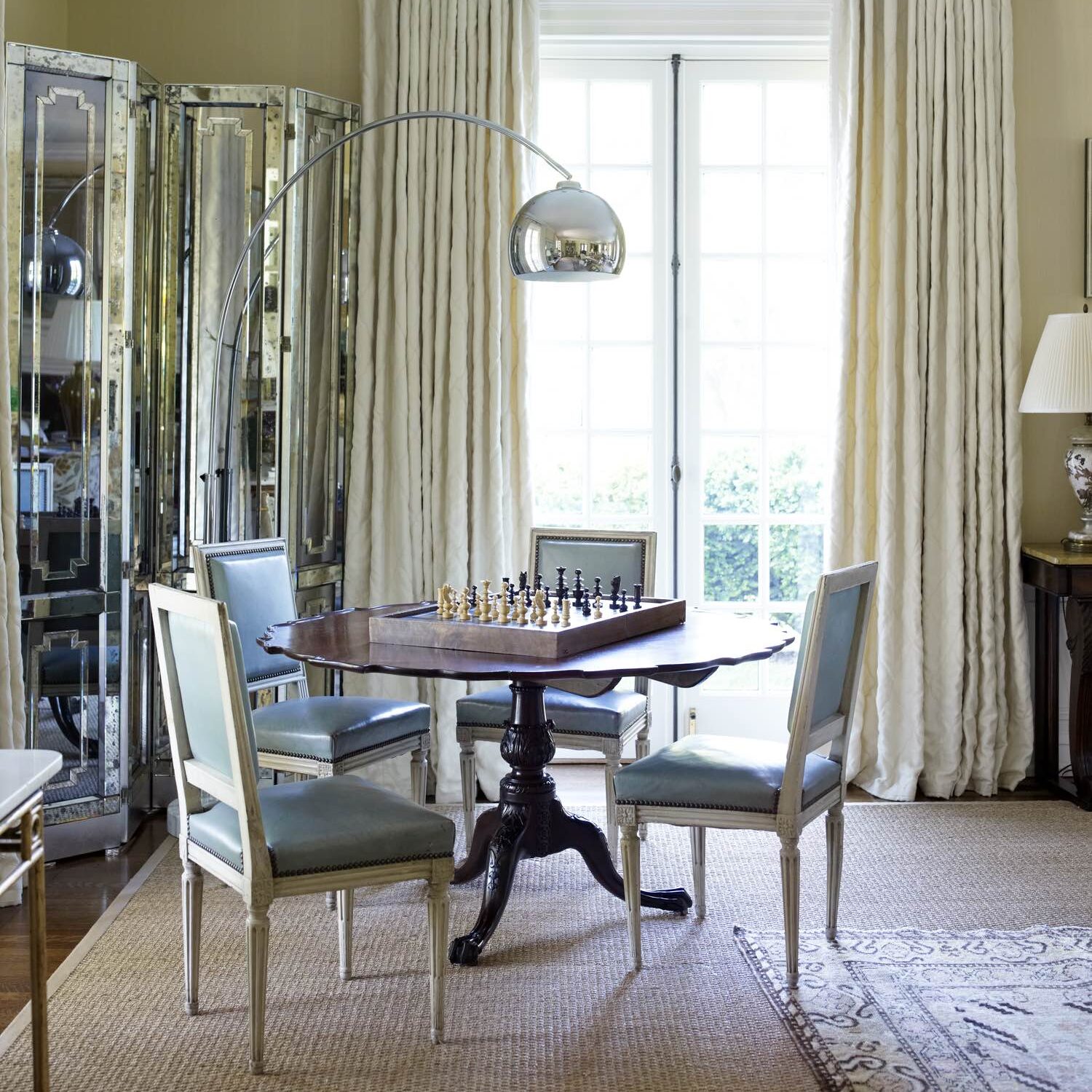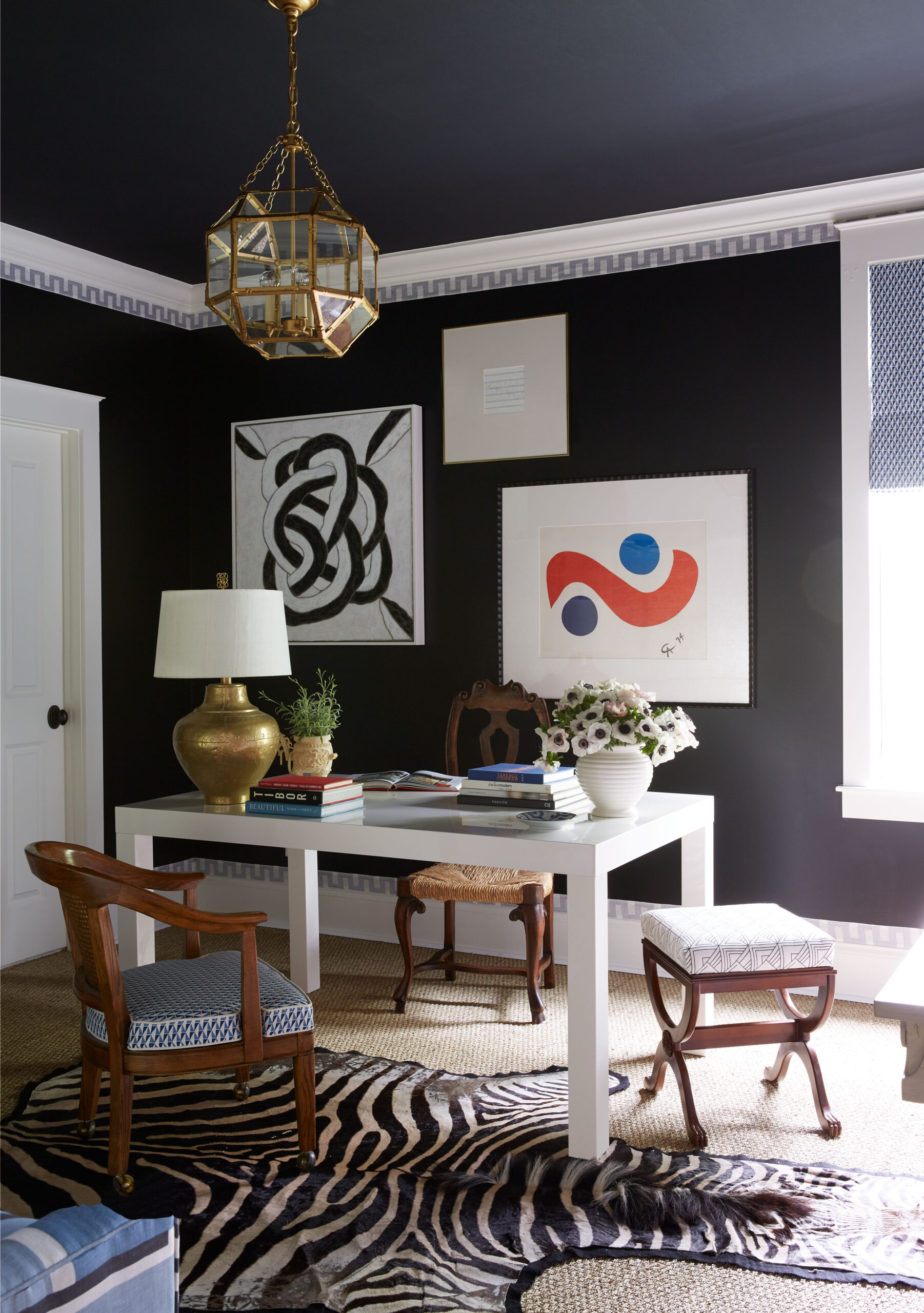Few design elements feel quite as luxurious as a canopy bed. Whether composed of simple linen panels or yards of sumptuous silk, a canopy creates a gorgeous focal point for a room—and provides an opportunity for the type of elevated decorating practiced by the greats of 20th-century design, from Mario Buatta to David Hicks.
Inspired by Schumacher’s new book, Charm Schoool: The Schumacher Guide to Traditional Decorating for Today, we asked a trio of designers how they’re bringing this old-school decorating technique back in a fresh, new way. Read on for tips on fabric selection, structure, finishing touches and more—and be sure to pick up a copy of Charm School for more inspiration from decorators past and present.
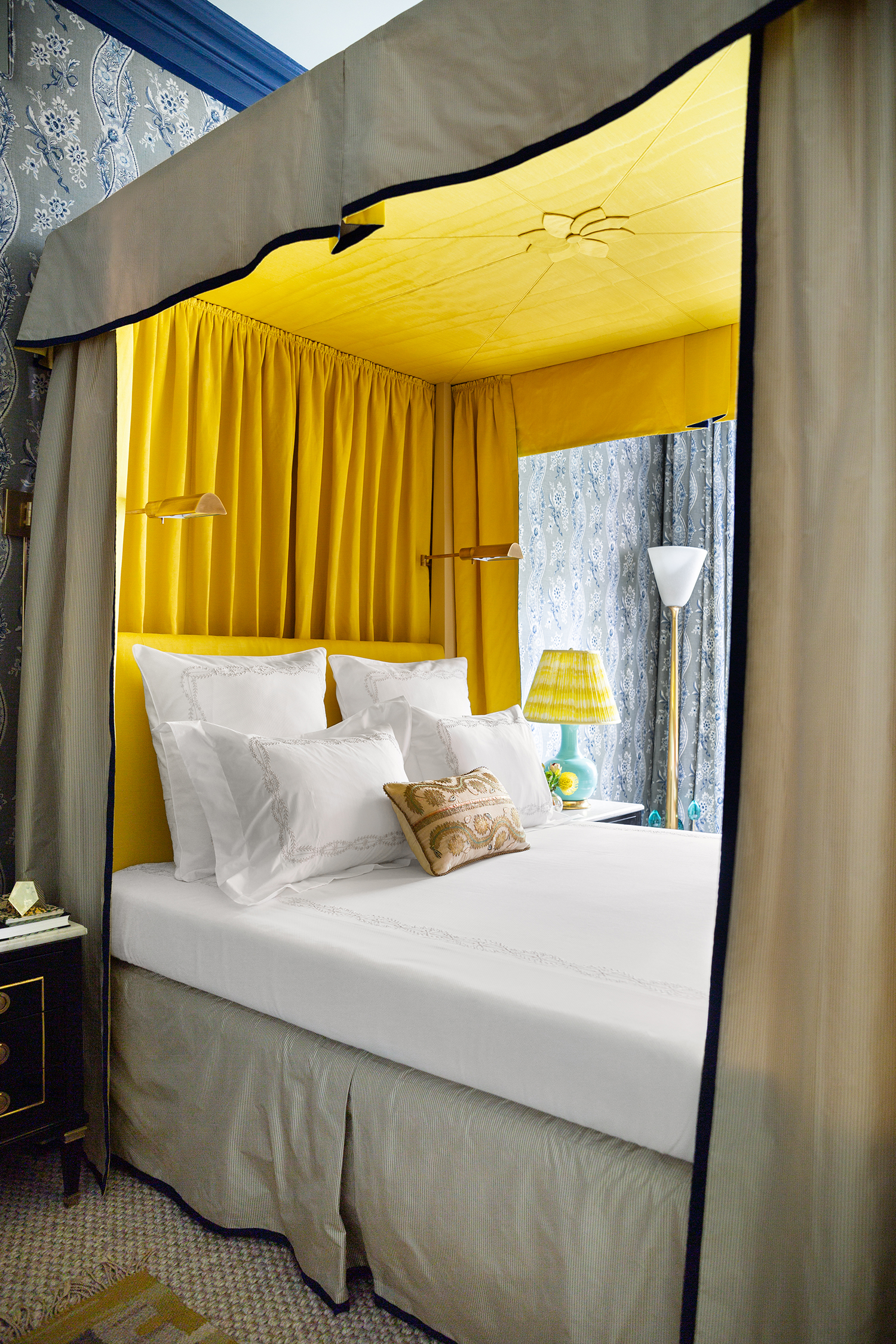
Peter Pennoyer Architects gave this formal canopy bed a playful twist by lining it in a vivid citron moiré. Canopy exterior and bed skirt in Schumacher’s Charee Silk Stripe; lining and headboard in Incomparable Moiré; walls in Le Castellet fabric.
BRITTANY AMBRIDGETo Canopy or Not to Canopy?
For medieval European nobles, bed hangings were an essential guard against chilly nighttime drafts. While today’s canopies are more about beauty than practicality, they do have benefits beyond the merely aesthetic. “They are great from an acoustics standpoint by helping with sound absorption,” says Birmingham-based interior designer Andrew Brown.
They’re also a surefire way to warm up a room visually. “Bed hangings play a part in making a bedroom feel cozy and complete, and add a softness when elaborate window treatments are not an option,” says designer Heather Chadduck Hillegas, also based in Birmingham. And you don’t need a palatial space to make them work. “In smaller bedrooms they have the effect of creating a room within a room and can actually make the room feel more spacious,” Brown says.
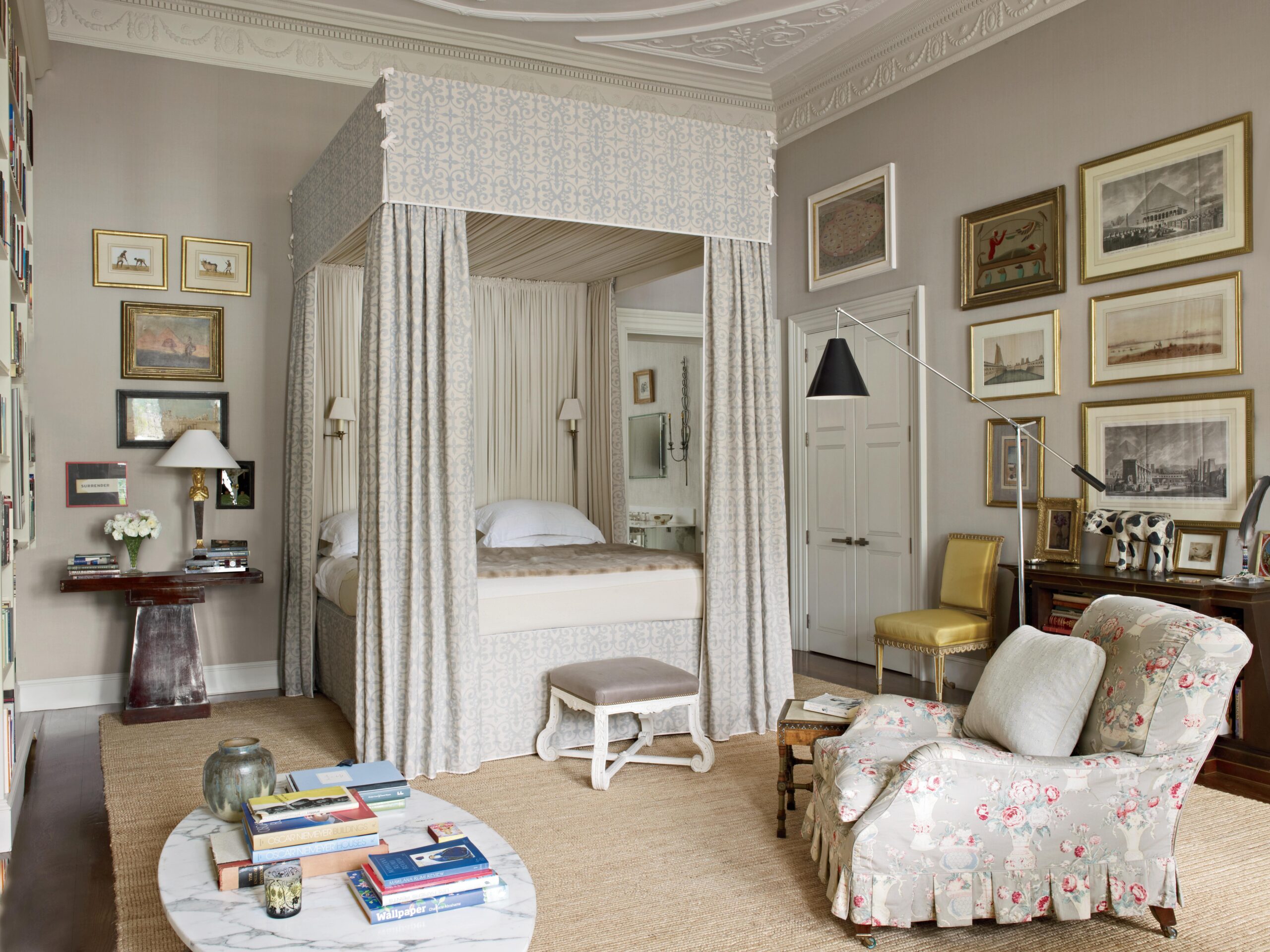
Veere Grenney used his own Ferne Park linen in Blue for this stately canopy bed. Finished with a shirred ivory lining and delicate bows, it’s the perfect blend of tailored structure and romantic softness.
Simon UptonChoose the Right Fabric
When it comes to fabric selection, Brown advises taking the home’s environment into consideration. For a recent project in the Dominican Republic, the designer fashioned bed hangings from lightweight linen and cotton fabrics that suited the tropical setting. “Velvet for bed hangings would not have felt appropriate in that location,” he says.
On the other hand, for spaces that call for extra warmth—think a cozy mountain chalet or a historic stone farmhouse—Brown suggests using an interlining between two layers of fabric to give the bed hangings extra body.
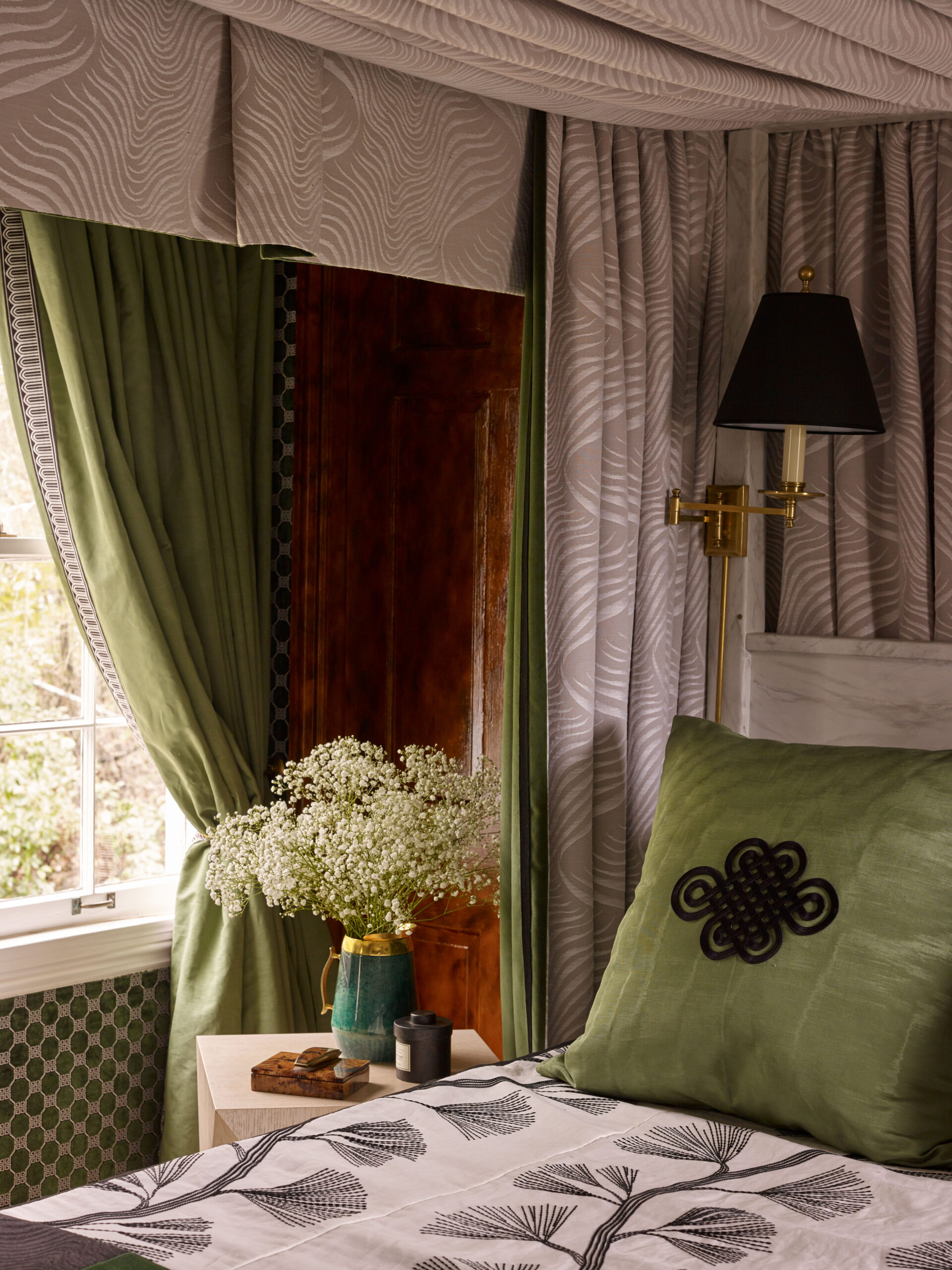
A contrast lining in Sauvage High Performance Woven lends another layer of visual interest to a luxe canopy by Andrew Brown Interiors. Coverlet in Ginkgo Embroidery; pillow in Incomparable Moiré with a Good Luck Knot Appliqué.
Francesco LagneseThink Outside the Bed Frame
No four-poster? No problem. Palm Beach-based designer Danielle Rollins suggests “a modernized hanging canopy where the bed hanging is the structure.” Try hanging a tailored valance and fabric panels directly from the ceiling to create the illusion of a canopy frame. Or, to keep things even more streamlined, opt for a single fabric panel that swags dramatically over the bed.
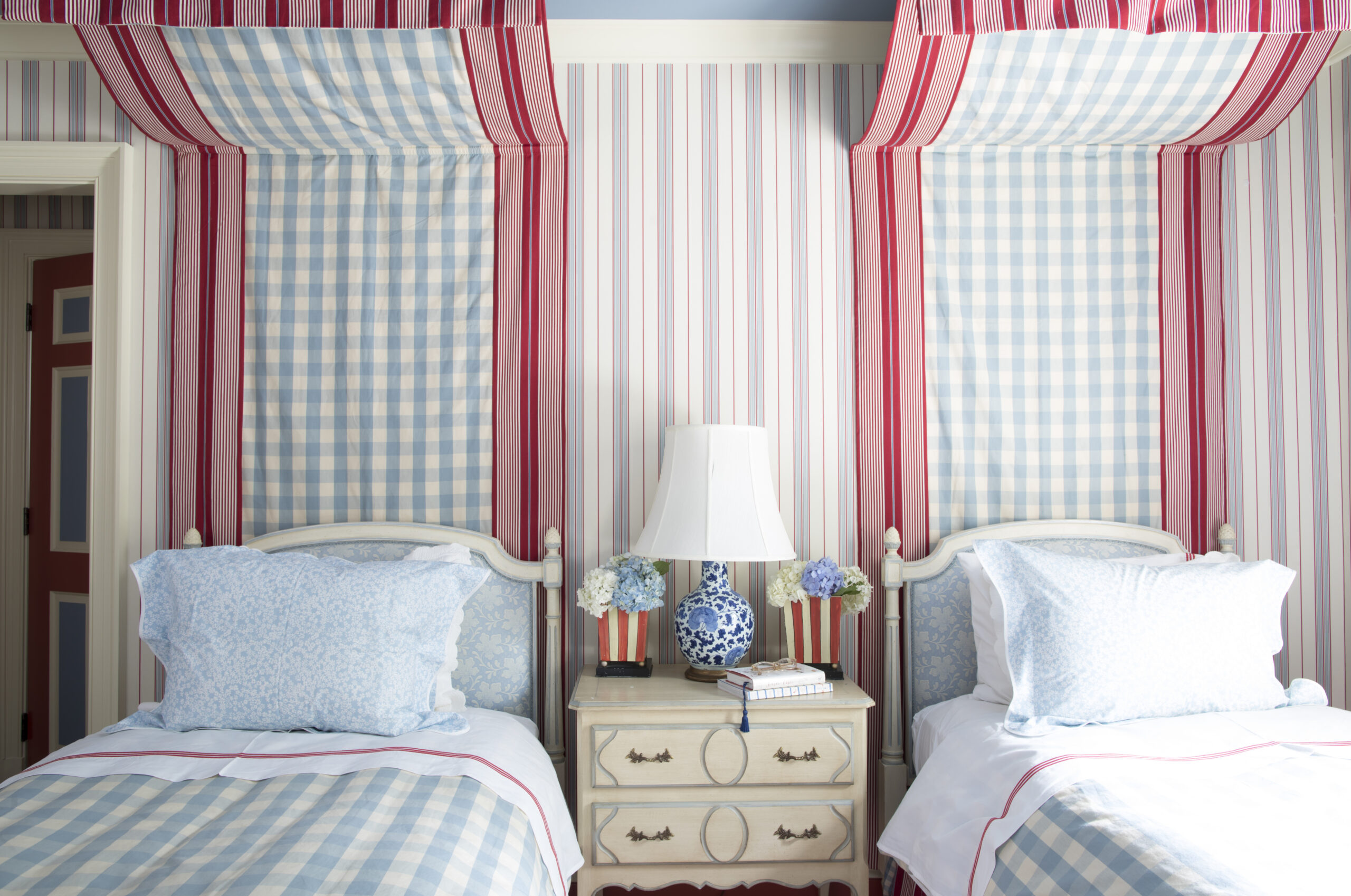
In a charming bedroom designed by Danielle Rollins, simple fabric canopies give a pair of twin beds extra oomph. Center panels and coverlets in Schumacher’s Elton Cotton Check.
Sarah Dorio PhotographyMaster the Mix
Even more so than curtains, bed hangings offer an opportunity to layer an abundance of patterns and textures. “I love to use contrast fabrics on bed hangings,” says Brown, “typically mixing a solid on either the exterior or interior with a pattern on the opposite side.” Chadduck Hillegas likes to incorporate three or more fabrics: “A statement fabric for the body, a solid or tiny stripe for the interior and a contrast fabric, applied on the bias, as a tiny welt.”
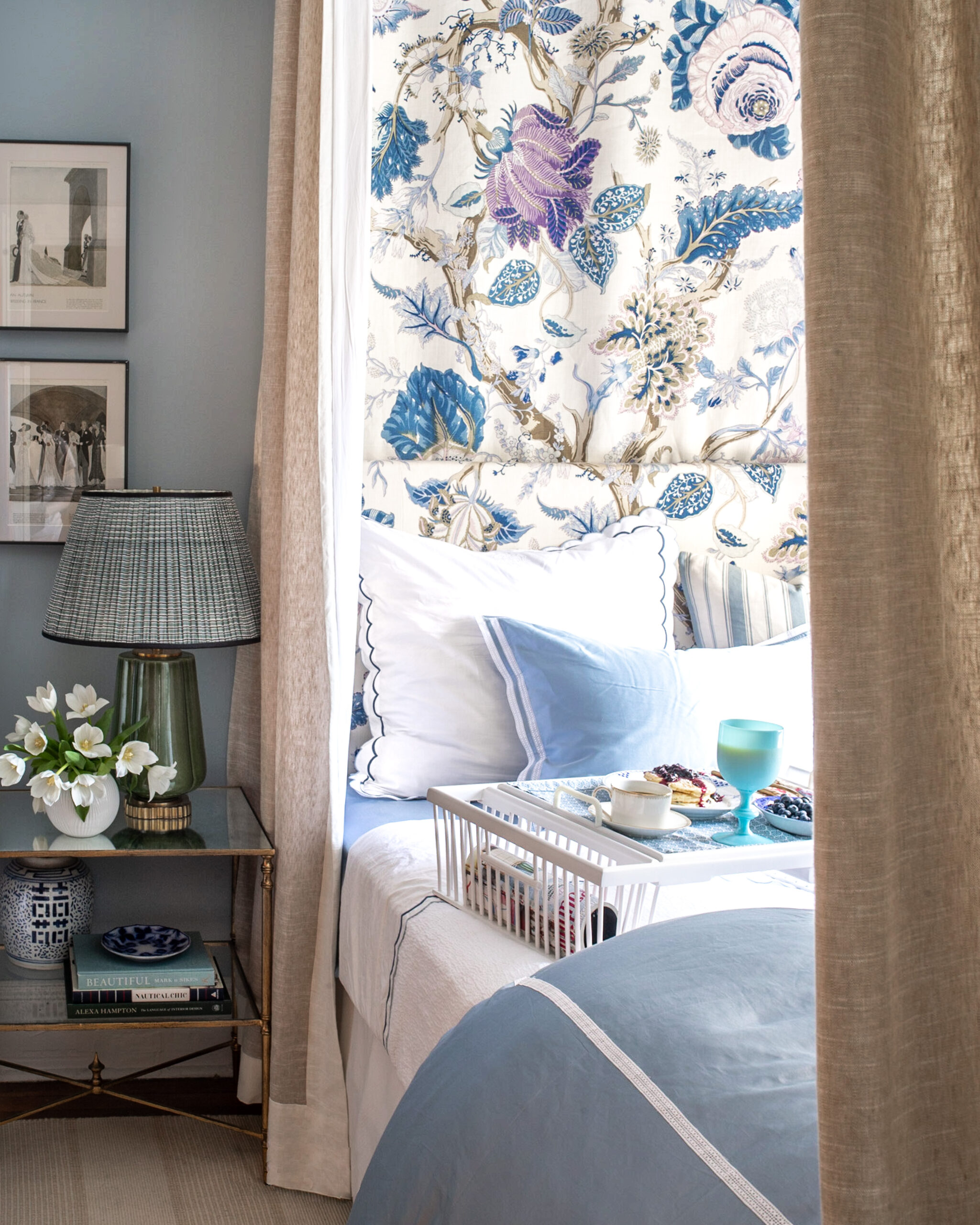
Solid linen side panels temper Indian Arbre‘s large-scale tree-of-life pattern in this enveloping canopy bed designed by Stacie Flinner.
Stacie FlinnerDon’t Forget the Finishing Touches
For next-level bed hangings, don’t skimp on trims. “A beautiful tape or gimp going up the leading edge of bed panels and horizontally around the lower edge of a canopy can elevate bed hangings,” says Brown. Rollins agrees: “I am a more-is-more girl. I like the bells and whistles, and I’ve never met a tassel I didn’t like. Particularly on a solid-color ensemble, a trim can make the difference: It can be a sweetly coordinated grouping of trims in the same color for a more feminine touch, or a grosgrain contrast for a more masculine feel, but it provides a graphic element that defines and outlines the bed suite.”
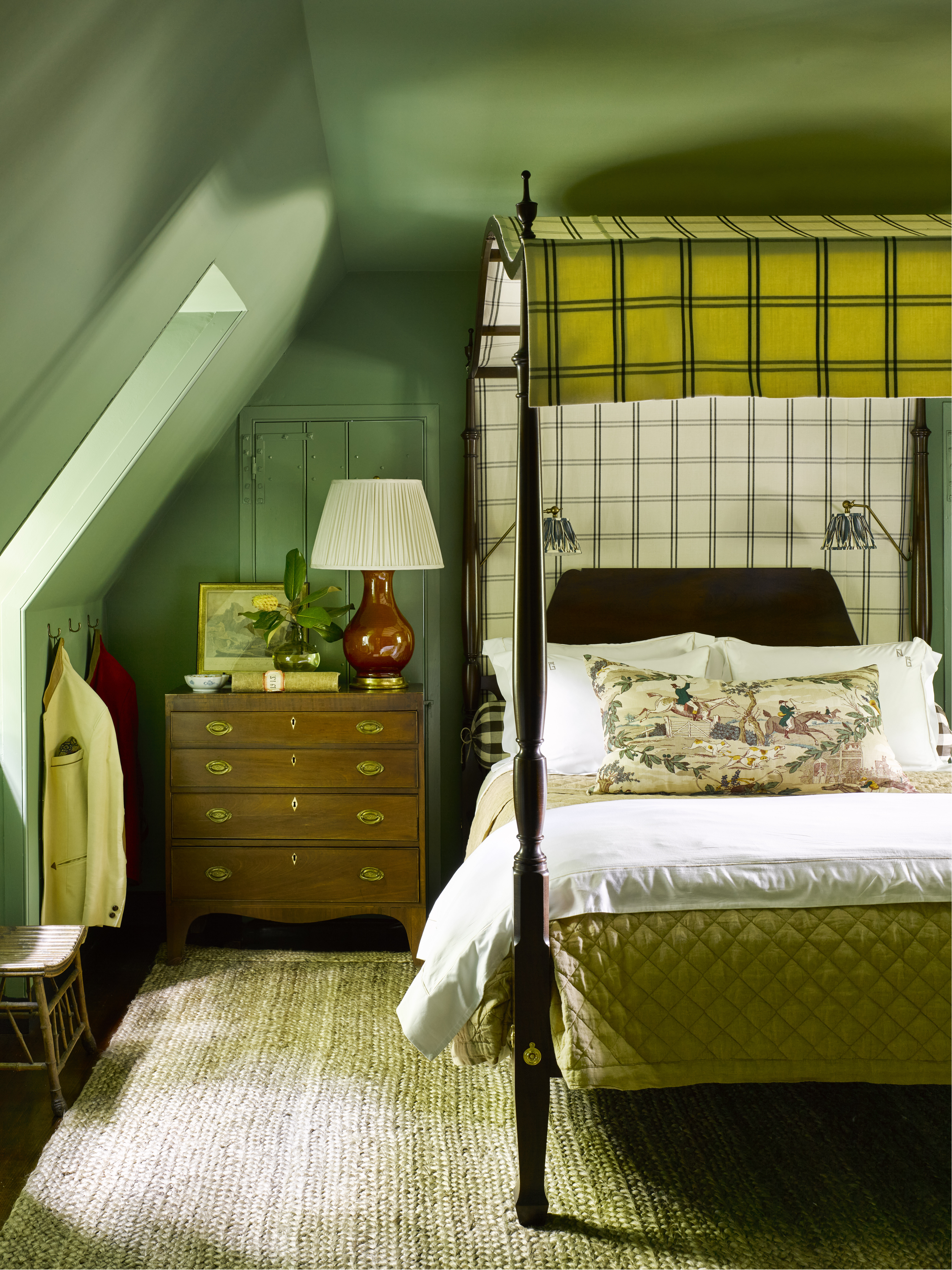
“We make casual [canopies] for summer homes and more structured formal canopies for antique beds in historic dwellings,” says Chadduck Hillegas, the 2022-2023 Designer in Residence for Colonial Williamsburg. In this guest room at the circa-1695 Nelson-Galt house—the oldest residential house in Williamsburg—the designer topped a traditional canopy bed with a simple tailored panel in handsome Luberon Plaid.
Annie SchlechterTie It All Together
All the elements of a canopy bed should work in harmony, including the bedding itself—and making these selections can be one of the most fun parts of the process. Brown suggests two different approaches: one minimalist, one maximalist. “Making the rest of the bed feel cohesive with the bed hangings can be as simple as using crisp, white bed linens,” he says. Alternatively, “you could also use the same bed hanging fabric and have custom bedding made, for an allover pattern look.”
“Making a bed is an art, and one of my favorite parts of decorating,” says Chadduck Hillegas. If a canopy is involved, she’ll often keep the rest of the bed dressings streamlined. “When installing a bed canopy we often forego a bed skirt and make a coverlet that sweeps the floor or embrace the beautiful bed and expose the side rails” says the designer. “Pillows should mimic the fabrics in the canopy and we always choose boutique sheeting with a coordinating thread.”
For more tips on classic decorating with a modern twist, pick up a copy of Charm School: The Schumacher Guide to Traditional Decorating for Today >

